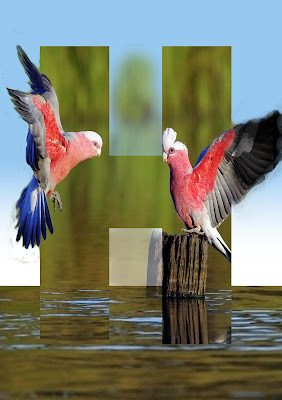Just some years back, it was an extremely a difficult task to sell a product in an online space but with the popularity of social media and the World Wide Web(WWW), many products have been sold online and are still being sold. There is a way that manufactured products can be advertised and sold using online tools or aids like websites, and social media platforms like Facebook, twitter, Instagram, WhatsApp and many more. All that is needed is knowledge and especially in this era where advancement in technology is becoming increasingly marvelous, you want to drive sales to keep the business running at a profit and not at a loss. This is where the many questions you have on product photography get answered.
What to expect:
What is product photography?
Why product photography?
Who can do product photography?
Significance of product photography.
Tips and techniques in product photography.
Tools to promote manufactured products.
What is product photography?
Photography is an art of capturing scenes, subjects, objects or events using a device called a camera by creative use of light which can be natural or artificial light. Natural light is light provided by the sun or any natural luminous body but artificial light on the other hand refers to alternative forms of lights provided by a photographer to illuminate a poorly lit subject for correct exposure.
Product photography is a type of branch of photography that deals with the taking of images of products for different purposes but on a major scale for advertisement. Products as mentioned in this instance are mostly physical goods that have physical representations or forms. Photography can be considered in many aspects of like like agriculture, technology, sports etc. This kind of photography is very important considering the extent to which it can be beneficial or in another term not helpful to a company which will be based on its application. Photographers are professionally employed by companies who produce products in order that they can use their creative knowledge to help drive sales of these products. A product can be a very good one but without a good image of it registered in the mind of the buyers, the product might not sell.
Why product photography?
The answer to a question like this cannot be a straightforward one in the sense that there are many people into photography be it smartphone or digital camera photography. Advertisers, Graphic Designers, packaging designers, brand designers etc make very crucial uses of product photography for product packages and other advertisement media like ads, posters, brochures, billboards etc.
A good visual impression of any product increases the chances of a purchasing decision and this is why brand designers and Graphic Designers take product photography to a level where it is able to influence viewers to engage in the purchase of a product.
Significance of product photography
There are several ways that a good photograph of a product is important or beneficial to manufacturers and these important benefits are responsible for why monetary investments are made into this type of photography.
For someone to buy a product, there is a psychological processing that goes on and this is sensation followed by perception and a decision can be made so whether a product image is physically or digitally viewed, the aesthetic value greatly impacts convention of a viewer into a buyer. It isn't enough to send out an image of a product or an item but a one that speaks good about it is the one of importance and because it creates awareness of a product and its features.
- A great tool in marketing and advertising
The distribution process or aspect of marketing is enhanced by product photography and likewise in advertising because taking a television advertisement or social media Ads as a case study, an image has to be made available for the audience to view. If a television advertisement of a product cannot be done without the product shown, then it is a confirmation that product photography is very significant.
Impulse buying normally can be a result of a very appealing image of a product that reaches the sight of a buyer that creates a positive impression. People are attracted to what looks good and being aware of this psychological occurrence as a Communication Designer, once a good image of a product is sent out, be assured of positive responses from the viewers.
Tips and helpful techniques for a good product photography
I saw a product that the image used for its label design was totally different from the actual image of the product but the producer was optimistic of good sales. This is a very bad act and it does not promote trust in a brand at all as the viewers' perception of a product is different from the reality. Let's look at the tips quickly:
- Understand the problem and determine a goal
Design is all about problem-solving and product photography is a very integral component of the field which must be attended to with undivided attention. Getting a goal before embarking on any design deed means envisioning the aim and this directs every action carried out to make sure the end goal becomes a reality and no more an idea.
Composition which can be explained as purposeful arrangement of the subjects or products in this case is very key. Some product photos look so stunning that until the viewer gets such products, he or she is not comfortable. One way of capturing a person's attention with images is through compositions that will make the viewer think a bit and become appreciative .
- Provide and make use of good lighting
As a photographer, your major element in addition to the camera at hand is the light available for illuminating subjects. However, having a light available is like a first step and making creative use of the light makes it a perfect blend as details in a product are brought life and it looks real in the sight of the viewer.
An image of a product has to get a form(3D look) for it to catch attention and present itself great to look at a second time. One way that an image is able to communicate to a viewer is the form that it carries. The form can be gotten correctly through proper use of light either artificial or natural.
Few techniques to apply
- Use shallow depth of field
Shallow depth of field in an image simply means a particular subject(s) is the only one in focus with the other areas especially the background out of focus(blurred). This is achieved using a wide opening of the aperture through the use of a smaller f/stop number. Explore some of these techniques and observe the results.
Shallow depth of field here as the background is blurred.
- Creative use of point of view
This talks about the angle of view either a high angle or a low angle. Just be creative and explore the many capabilities available to better your images for performance in the marketing and advertising fields for products to sell.
Exposure describes how high or low the light in an image is and this affects the look of an image. A product photograph should be properly exposed to ensure that every detail is viewable to everyone who comes into contact with the image.
Tools for promoting products to boost sales and increase conventions rates
If you are a manufacturer looking for how to promote your products through photography, there are a lot of tools you can possibly make use of to make your dreams a reality.
Websites: Big companies have a company website on which everything concerning their products is displayed through product images and also accompanied by texts. Getting a website nowadays is not so difficult once you have access to a website designer to sort you out.
Social media: Significant product promotion and marketing campaigns are now very effective on social media. To get a viewer's attention to respond to a product image, the image must be very catchy and effective in communication. Facebook, Instagram, WhatsApp, Pinterest, among others have become very useful technological tools for promoting the sustainability of many businesses through the use of appropriate images. The only way a product photograph can be effective is when the photographer is very objective knowing very well about the audience and their visual literacy.














Comments
Post a Comment
Share your views on this insightful content